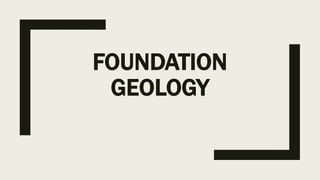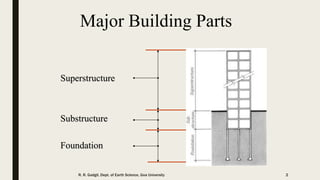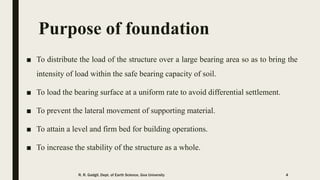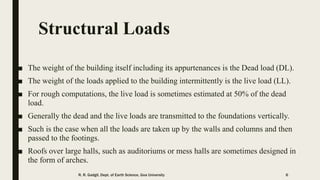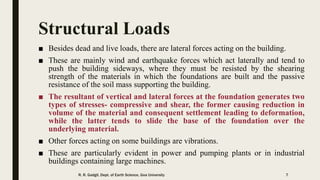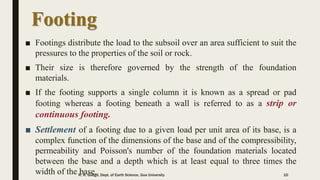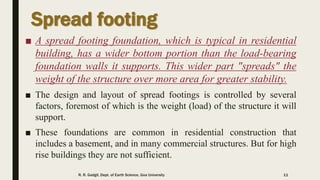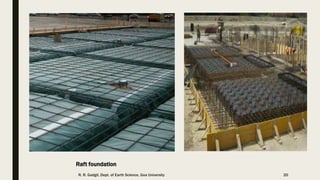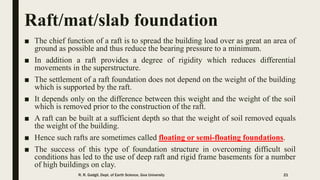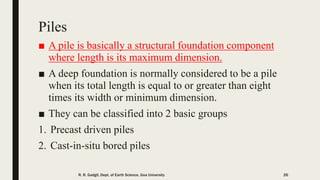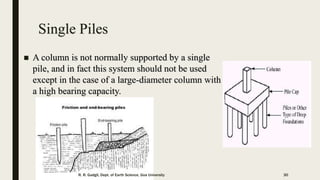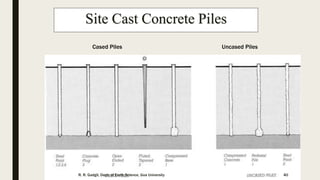The document discusses foundations for buildings. It describes shallow foundations, which transfer loads directly to soil near the surface, and deep foundations, which transfer loads to deeper, stronger soils using piles. Shallow foundations include spread footings, which distribute loads over a large area under columns and walls, and raft/mat foundations, which use a reinforced concrete slab to spread loads across an entire building site. Deep foundations use piles that extend through weak surface soils to stronger soils below, and include precast concrete or steel piles driven into the ground or cast-in-place bored piles. The type of foundation used depends on the building loads and the bearing capacity of subsurface soils and rocks.
